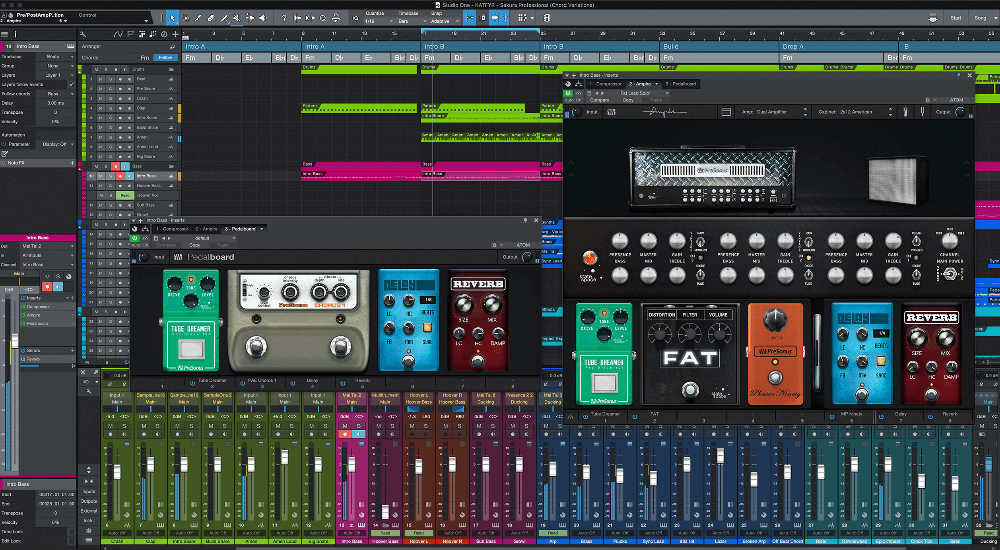Having been a Studio One user for almost five years nowm I have come to value the practicality of this software. It’s incredibly easy to pump through anything from recording voiceovers and full-length instrumental tracks to chopping up and editing samples and drumbeats. You’re able to intuitively and rapidly assemble loops, songs or even full length albums; taking care of tracking, mixing and mastering without the need of a subscription or endless plugin costs.
But enough of that, let’s get into the detail. The Ampire 3 plugin is the biggest feature in the new update. PreSonus have utilised their remarkable State Space Modeling technology to capture the nuance and impulse response of five classic guitar amplifiers. In addition to 16 cabinet models, you’re able to adjust the balance, delay, polarity and even the position of the microphone hooked up to the amp. Then comes the pedalboard with 13 effects. PreSonus are stressing that this feature is stand alone to the rest of the amps and cabinets, which makes it particularly exciting for producers and synth players. You’ve got a new tuner function, five massive distortion stompboxes as well as all your other standard effects – reverb, delay, pan, modulation, equalizer etc. The Big Fuzz and strikingly similar copy of the original Boss Chorus pedal will add some gritty depth to any track you put them on.
If any of this tickles your fancy and you aren’t a Studio One user, you’re able to purchase the Ampire plugin as an add-on to the free Studio One Prime for $59.95. On that note, if you’re worried about being too familiar with different software, Studio One has preset keyboard shortcuts that mimic other DAWs like Pro Tools and Logic to help you transition between them with ease.
The PreSonus Shop now has a tab within the Browser, so you’ve no need to leave your window to search for new plugins. PreSonus really strive to include small features like this so as not to disrupt your workflow. You can navigate through in either the classic list view or the new Gallery view option, which helps you visualise what you’re about to purchase, as well as manage your existing plugins and SoundCloud. You can also manage Exchange within the Browser as well, letting you download, review and preview shared content by other Studio One users, and you can even upload your own content such as presets, grooves, FX chains or soundsets.
The Pattern and Arranger updates are great for loop based production and are features I’m sure will be enjoyed by those enthralled with electronic music. It allows you to effectively humanise the feel of your tracks without having to painstakingly key in variations. Convert parts to patterns and vice versa. Adjust parameters such as probability, swing, velocity, individual note length and delay for both melodic and drum grooves. You can also isolate and adjust the step length of a drum hit so it plays on a slightly different beat each time. Once you’re finished editing your pattern, simply convert it back to a part and it is all saved and you’re ready to finish the rest of the track.
PreSonus are also adapting Studio One to be favourable for recording podcasts and audiobooks. The Podcast Production Template features a Macro Toolbar page intuitively designed for the specific needs of recording voice. You’re able to add tailored Fat Channel EQs, compression or a bit of reverb, in addition to tempo matching and time stretching functions.
Overall, this extensive update has made Studio One even more suited to capturing your creativity on the fly or sitting with you for hours on end crafting entire arrangements.

